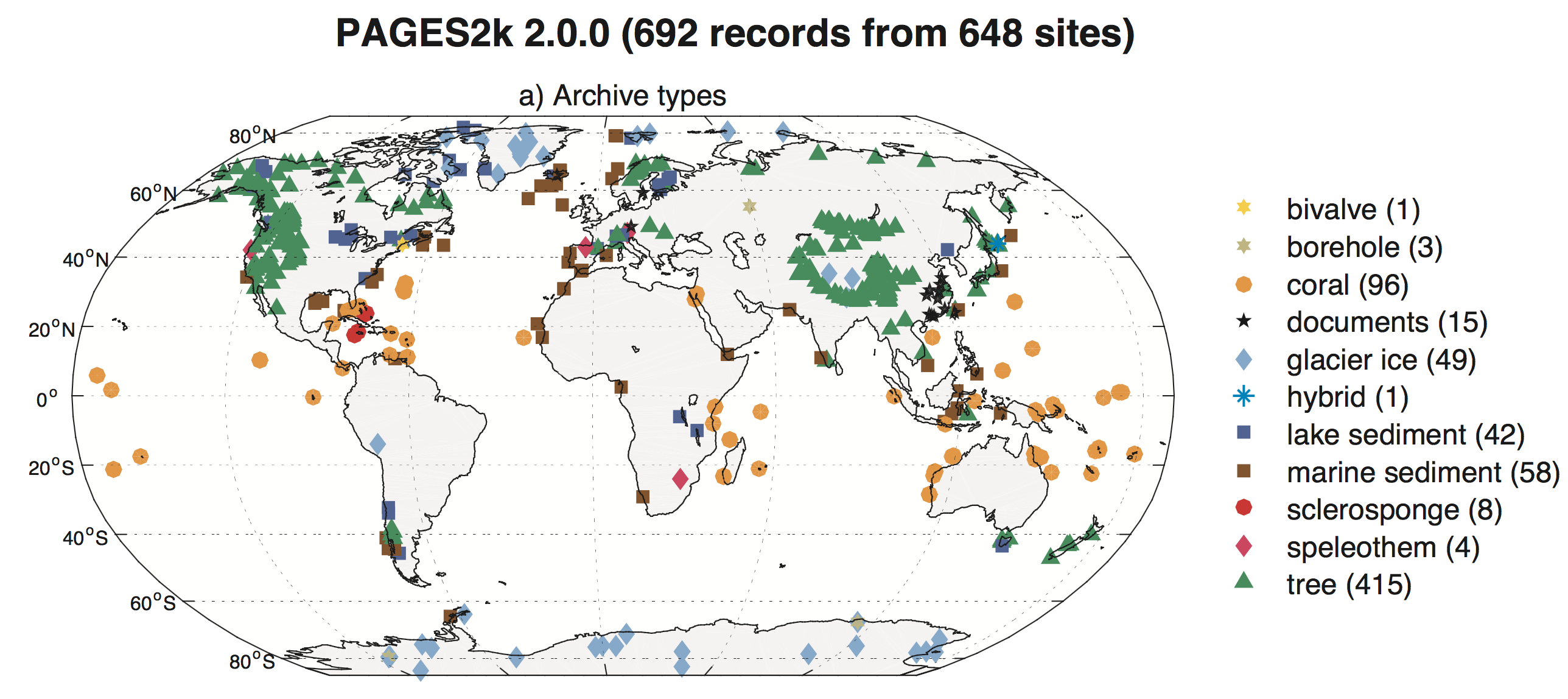By Pages 2k Consortium | July 11, 2017

PAGES 2k Data Coverage
Introduction
One of the products of Phase Two of the Pages2k project was this curated data product of temperature reconstructions for the past 2000 years. This is a dynamic compilation, meaning that new datasets that meet the criteria for inclusion can be added and included in subsequent versions. See the criteria and data submission sections below for details.
Data
Data access and LiPDverse visualizations are available here.
Publication
A data descriptor for the compilation was published in Scientific Data and is [available here]((https://www.nature.com/articles/sdata201788).
Criteria for inclusion
The complete criteria for inclusion are described in the Scientific Data Descriptor, but in short: To be included in the Pages2k v2 Temperature compilation, a dataset must:
-
Thermal sensitivity Be sensitive to past changes in temperature, demonstrated through statistical methods (e.g. a correlation with nearby instrumental temperature data was high enough to reject the null hypothesis of zero correlation at the 5% level) and/or when the original study described a mechanistic relation between the proxy value and temperature.
-
Record duration Annually-banded terrestrial records must cover at 3000 years of the Common Era, annually-banded marine records must cover 50 years of the Common Era. Non-annually banded records must conver at least 500 years of the Common Era.
-
Record resolution The average resolution of all records must be 50-years or finer, with the exception of marine sediment records, which must be 200-years or finer.
-
Chronological accuracy When annual layers cannot be counted, the timelines for records must be constrained by at least one chronological control point near the most recent end of the record and another near the oldest part of the record, or 1 CE, whichever is younger. Records that are longer than 1,000 years must include at least one additional age approximately midway between the other two. What constitutes ‘approximately’ is open to reasonable interpretation but was typically within two centuries of the mid-point.
-
Peer-review Only records described in manuscripts that have undergone peer-review are considered for selection. For new records, a dataset can be admitted upon acceptance of the paper – it is not necessary to wait for full publication.
Adding data to this compilation
If you’re interested in adding a dataset to PAGES 2k v2 Temperature compilation, whether it’s a new study you’re involved with, or an older record that was previously overlooked or unavailable, follow these steps:
- Check that the data meet the criteria for inclusion in the study
- If the dataset is not already formatted as a LiPD file, please do so using the interactive web tool at LiPD.net, and download the resulting file
- Upload the data to the lipd.net playground, check that the file validates, then click the “submit to LiPDverse” button. In the form, note that you’d like the dataset to be included in the Pages2k v2 Temperature compilation.
For more information, take a look at the frequently asked questions.
Long-term archival
The PAGES 2k data are archived at the World Data Center for Paleoclimatology, and are available here.
